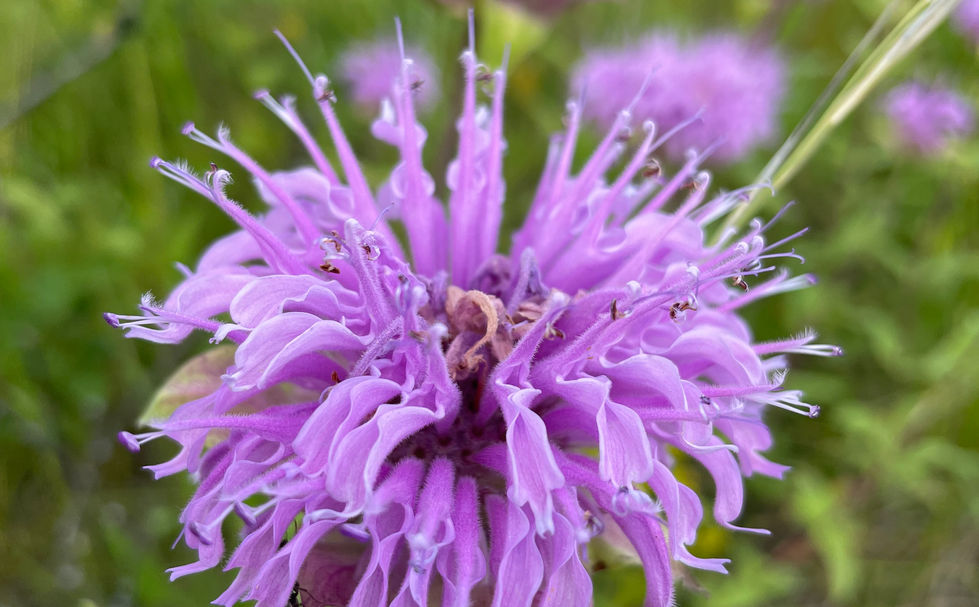Details
Emerges
Seed collection
Flowers
July, August
Pink
September
Height
30
-
60
cm
Lifecycle
Perennial
Width
-
40
cm
Habit
Forbs
Herbaceous
Ecology
Supports
Bees
Butterflies & Moths
Hummingbirds
Providing
Nectar source
The tubular nectar-rich flowers of Wild Bergamot Bee Balm are magnets for bees, hummingbirds, and butterflies.
Habitat
Typically found in
prairie, open woods
In the Garden
Growing Conditions
Moisture
Average
Light
Full sun
Part sun
Part shade
Soil
Average garden soil
Propagation
Via
Seeds
Sowing Recommendations
Cover seeds
Spring planting
Fall planting
High or easy germination
Landscape
Use for:
Fall colour
Mass planting
Winter interest
Naturalization
Growing Tips
Wild Bergamot seeds do not require any special treatment before they will germinate. Plant seeds outside in fall or early spring. Plant is susceptible to powdery mildew, so plant should not be crowded.
Description
Wild Bergamont blooms from midsummer into fall with fragrant pale purple flowers that seem to burst from the buds like fireworks. It has aromatic leaves used to make mint tea.



